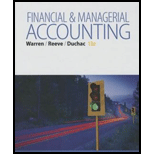
Concept explainers
(1) (a)
Allowance method:
It is a method for accounting bad debt expense, where amount of uncollectible accounts receivables are estimated and recorded at the end of particular period. Under this method,
Percentage of sales method:
Credit sales are recorded by debiting (increasing)
It is a method of estimating the bad debts (expected loss on extending credit), by multiplying the expected percentage of uncollectible with the total amount of net credit sale (or total sales) for a specific period. Under percentage of sales method, estimated bad debts would be treated as a bad debt expense of the particular period.
the amount of (a) the addition to allowance for doubtful accounts and (b) the accounts written off for each of the four years.
(2)
To advise: Person LJ, whether the estimate of ½ of 1% of credit sales appears reasonable.
(3)
To discuss: The action, which is required to determine the required balance in allowance for doubtful accounts by December 31, 2016, and suggest the possible changes for the recommended accounting for uncollectible receivables.
Want to see the full answer?
Check out a sample textbook solution
Chapter 8 Solutions
Bundle: Financial & Managerial Accounting, 13th + CengageNOWv2, 2 terms (12 months) Printed Access Card
- Need answer general accounting questionarrow_forwardLast year the return on total assets in Calvin Electronics was 15%. The total assets were 4.5 million at the beginning of the year and 5.5 million at the end of the year. The tax rate was 30%, and sales were $8.2 million. What was the net income for the year?arrow_forwardNeed accounting questionarrow_forward
- I am trying to find the accurate solution to this financial accounting problem with appropriate explanations.arrow_forwardTotal production of 3,500 units of finished goods at Tristar Manufacturing required 15,400 actual hours at $18.75 per hour. The standard is 4.2 hours per unit of finished goods, at a standard rate of$19.00 per hour. Which of the following statements is true?arrow_forwardPlease provide the accurate answer to this general accounting problem using valid techniques.arrow_forward
- Please show me how to solve this financial accounting problem using valid calculation techniques.arrow_forwardWhat is harmony beats record store's contribution margin per unit in dollors.arrow_forwardI need help finding the accurate solution to this general accounting problem with valid methods.arrow_forward
- Principles of Accounting Volume 1AccountingISBN:9781947172685Author:OpenStaxPublisher:OpenStax College
 College Accounting, Chapters 1-27AccountingISBN:9781337794756Author:HEINTZ, James A.Publisher:Cengage Learning,
College Accounting, Chapters 1-27AccountingISBN:9781337794756Author:HEINTZ, James A.Publisher:Cengage Learning, College Accounting (Book Only): A Career ApproachAccountingISBN:9781305084087Author:Cathy J. ScottPublisher:Cengage Learning
College Accounting (Book Only): A Career ApproachAccountingISBN:9781305084087Author:Cathy J. ScottPublisher:Cengage Learning  Financial AccountingAccountingISBN:9781337272124Author:Carl Warren, James M. Reeve, Jonathan DuchacPublisher:Cengage Learning
Financial AccountingAccountingISBN:9781337272124Author:Carl Warren, James M. Reeve, Jonathan DuchacPublisher:Cengage Learning Financial Accounting: The Impact on Decision Make...AccountingISBN:9781305654174Author:Gary A. Porter, Curtis L. NortonPublisher:Cengage Learning
Financial Accounting: The Impact on Decision Make...AccountingISBN:9781305654174Author:Gary A. Porter, Curtis L. NortonPublisher:Cengage Learning





